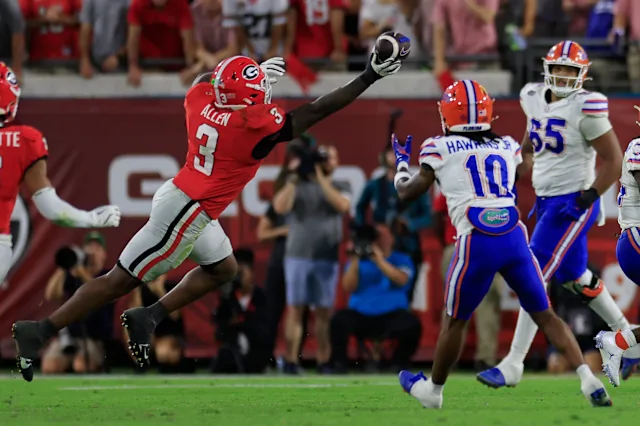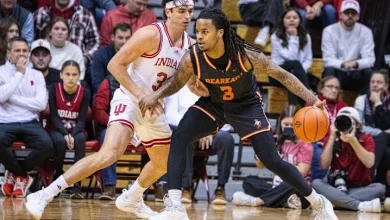Georgia, Florida set to earn $7.5 million for playing at neutral site

Georgia, Florida set to earn $7.5 million for playing at neutral site
The upcoming neutral-site game between Georgia and Florida, projected to generate an impressive $7.5 million in revenue, marks a significant milestone in college football’s evolving landscape of high-stakes matchups and strategic financial planning. This landmark event underscores the increasing importance of strategic scheduling, national exposure, and revenue generation in the modern era of college athletics. As two legendary programs with storied histories and passionate fanbases, Georgia and Florida’s decision to meet at a neutral site not only offers a compelling on-field rivalry but also exemplifies how financial considerations and branding opportunities are reshaping college football’s landscape. This comprehensive analysis explores the economic, strategic, and cultural implications of this game, the factors driving its financial success, and what it signifies for the future of college football scheduling and revenue models.
—
### The Background: Georgia-Florida Rivalry and the Move to a Neutral Site
The Georgia-Florida rivalry, often dubbed the “World’s Largest Outdoor Cocktail Party,” has long been one of college football’s most iconic matchups. Traditionally played in Jacksonville, Florida, this game has captivated fans for decades, embodying regional pride, intense competition, and storied traditions. However, in recent years, logistical challenges, stadium renovations, and strategic considerations have prompted organizers to explore alternative venues and formats to maximize revenue and exposure.
The decision to move this game to a neutral site outside of Jacksonville represents a strategic shift aimed at expanding its reach and financial potential. Hosting the game at a prominent stadium—such as Mercedes-Benz Stadium in Atlanta or a major venue in a nearby city—offers larger capacity, modern amenities, and broader national exposure. This move aligns with broader trends in college football, where marquee matchups are increasingly staged at neutral sites to attract larger audiences, secure lucrative broadcasting deals, and generate substantial revenue.
—
### The Financial Breakdown: How $7.5 Million Is Generated
The projected $7.5 million revenue from this Georgia-Florida game arises from multiple revenue streams, including ticket sales, broadcasting rights, sponsorships, merchandise, and hospitality packages. Each component plays a vital role in contributing to the overall financial success.
**1. Ticket Sales:**
With a capacity of approximately 70,000 to 80,000 spectators at a major neutral-site stadium, ticket sales constitute a significant portion of revenue. Premium seating, VIP packages, and hospitality suites command high prices, often ranging from hundreds to thousands of dollars per ticket. For instance, premium packages can generate upwards of $200,000 to $300,000 per suite, while individual tickets might average around $100-$200 for general admission. Given high demand from passionate fanbases, ticket sales alone can contribute approximately $3 million to $4 million.
**2. Broadcast Rights:**
National television and streaming rights form another substantial revenue source. Networks pay premium fees for marquee college football games to reach vast audiences. In this case, broadcasters like ESPN, ABC, or Fox Sports likely pay between $2 million and $3 million for the rights to air the game nationally. Additionally, streaming platforms and international broadcasts expand viewership, further boosting revenue.
**3. Sponsorships and Advertising:**
Corporate sponsors see this matchup as an excellent branding opportunity. Companies may pay millions for advertising during the game, including in-stadium signage, commercials, and digital promotions. Sponsorship deals can bring in $1 million or more, depending on exposure levels and contractual terms.
**4. Merchandise Sales:**
On-site and online merchandise sales—featuring team gear, memorabilia, and event-specific merchandise—add another revenue stream. While not as large as ticket or broadcast revenues, merchandise sales can generate hundreds of thousands of dollars, especially if the game garners national attention.
**5. Hospitality and Concessions:**
Hospitality packages, including VIP experiences, catered suites, and special event access, can generate millions. Concession sales during the game, while variable, contribute additional income, especially given the high foot traffic and premium offerings.
Aggregating these streams, the total revenue approaches the $7.5 million mark, with some estimates suggesting that the actual figure could surpass this threshold depending on ticket demand, broadcast deals, and sponsorship agreements.
—
### Strategic Benefits for Both Programs
Beyond immediate revenue, hosting a high-profile neutral-site game offers strategic advantages for Georgia and Florida.
**a. Enhanced Exposure and Branding:**
Playing at a neutral, possibly nationally televised venue elevates both programs’ profiles. It attracts viewers nationwide, introduces the rivalry to new audiences, and enhances recruiting efforts by showcasing the programs on a grand stage.
**b. Revenue Diversification:**
Moving away from traditional home-and-away series provides financial diversification. Large-scale neutral-site games can generate more income than typical conference matchups, especially when designed with premium ticketing and sponsorships.
**c. Long-term Financial Planning:**
The revenue from such events can be reinvested into facilities, coaching staff, and recruiting budgets, further strengthening the programs’ competitiveness.
**d. Fan Engagement and Experience:**
Neutral-site games often feature fan festivals, tailgating events, and entertainment that enrich the game-day experience, fostering stronger fan loyalty and community engagement.
—
### Challenges and Considerations
While the financial upside is compelling, hosting a major neutral-site game also involves logistical and strategic challenges.
**1. Travel and Accommodation:**
Ensuring convenient travel arrangements and accommodations for fans, teams, and media personnel is essential. High travel costs could offset some revenue gains if not managed effectively.
**2. Competitive Balance and Home-Field Advantage:**
Neutral-site games can diminish home-field advantage, potentially impacting team performance and fan enthusiasm. Coaches must prepare teams for unfamiliar environments.
**3. Scheduling Conflicts:**
Aligning this game within the broader college football calendar requires careful planning. It may influence conference scheduling, playoff considerations, and season-long logistics.
**4. Fan Attendance and Engagement:**
While larger venues and national broadcasts increase exposure, ensuring strong attendance and fan engagement remains critical. Promotional efforts and ticketing strategies are essential to maximize participation.
—
### Broader Implications for College Football
The Georgia-Florida neutral-site game exemplifies a broader trend in college football toward maximizing revenue through strategic event placement. Similar high-profile matchups—such as the Chick-fil-A Kickoff Game, the College Football Playoff semifinals, and the annual Red River Showdown—highlight how conference and program leaders leverage neutral sites for financial growth.
Furthermore, this approach aligns with the increasing commercialization of college sports, where revenue-sharing models, TV contracts, and branding initiatives shape the sport’s future. As conferences seek to maximize their media rights deals and schools aim to enhance their national profiles, neutral-site games will likely become more prevalent.
This trend also raises questions about competitive fairness, fan accessibility, and the preservation of traditional rivalries. Balancing financial incentives with the cultural and competitive integrity of college football will be an ongoing challenge for stakeholders.
—
### The Future Outlook: Sustainability and Innovation
Looking ahead, the success of the Georgia-Florida neutral-site game could pave the way for more innovative scheduling strategies. Possibilities include:
– **Rotational Neutral Sites:** Hosting marquee games at rotating venues across different regions to broaden reach and revenue.
– **International and Special Events:** Expanding beyond domestic venues to host games abroad, tapping into global markets.
– **Enhanced Fan Engagement:** Utilizing virtual reality, augmented reality, and digital platforms to augment the in-game experience and expand audience reach.
Sustainable financial models will also require careful balancing of event costs, ticket pricing strategies, and revenue sharing agreements to ensure long-term profitability and fan satisfaction.
The upcoming Georgia-Florida neutral-site game, projected to generate $7.5 million in revenue, exemplifies how college football is evolving into a highly strategic, revenue-driven enterprise. By leveraging a combination of ticket sales, broadcast rights, sponsorships, and ancillary income streams, both programs aim to maximize their financial returns while elevating their national profiles. This event not only highlights the economic potential of strategic scheduling but also reflects broader shifts in the sport’s landscape—where tradition meets innovation, and financial incentives drive decisions that shape the future of college football. As programs continue to seek new avenues for growth, the Georgia-Florida game stands as a testament to the sport’s dynamic and lucrative evolution, promising exciting opportunities and challenges ahead for all stakeholders involved.









